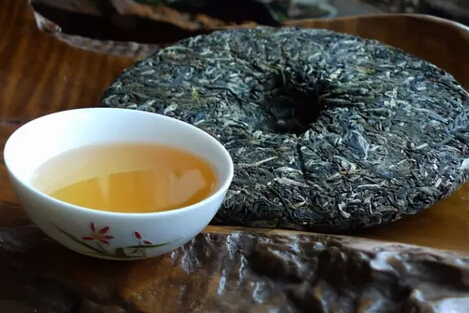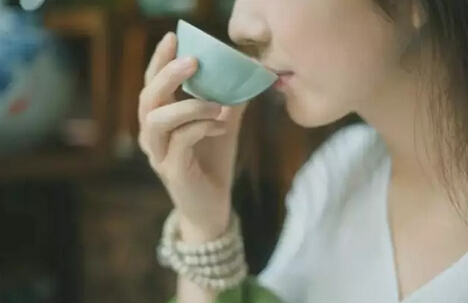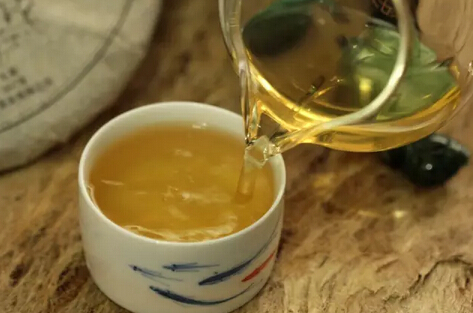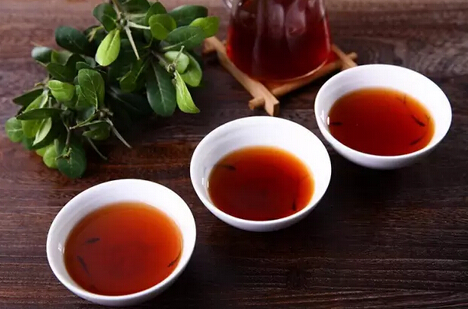Basic Overview of Raw Tea
Raw tea is freshly picked tea leaves that are naturally aged without undergoing pile-fermentation. Raw tea has a strong and stimulating flavor. Newly made or shortly stored raw tea has a pronounced bitterness, with a light or yellowish-green color in the tea soup. Raw tea is suitable for drinking.
Benefits of Raw Pu-erh Tea
Pu-erh tea is made from sun-dried large-leaf tea leaves from specific regions in Yunnan Province, processed through post-fermentation into loose tea or compressed tea. It is a unique category in Chinese tea. In the current market, Pu-erh tea products are classified by their characteristics into natural classification and academic classification.

Natural classification refers to sun-dried tea leaves that have not undergone pile-fermentation, commonly known as raw Pu-erh tea. Academic classification defines Pu-erh tea as a processed tea, artificially fermented, commonly known as ripe Pu-erh tea. Both types have many health benefits, depending on personal preference.
Raw tea primarily aids in cleansing the intestines, reducing fat, boosting energy, lowering blood pressure, and promoting weight loss, making it suitable for younger people. However, due to its high active components, it is not recommended for those prone to insomnia, suffering from colds or fever, having stomach ulcers, or pregnant women.
Pu-erh tea has many benefits, but the following precautions should be noted (must-read):
1. For those prone to internal heat, constipation, or acne (indicating a deficiency-heat constitution), raw tea or lightly fermented Pu-erh tea is suitable. If the bitterness is unappealing, ripe tea can be consumed with added white chrysanthemum, honey, or lotus leaves.
2. Like green tea, raw tea is cooling in nature and is not suitable for those with cold stomachs or poor digestion. Only ripe tea has stomach-nourishing properties.
3. Regarding weight loss, Pu-erh tea does have slimming effects, but results vary by individual. It is important to view Pu-erh tea rationally, as it is not a weight-loss drug.
Pu-erh tea aids weight loss by regulating the digestive system, enhancing fat digestion and absorption, and thus burning fat (commonly referred to as "scraping oil"). However, it cannot address perceived weight issues in individuals who are not actually overweight.
Additionally, Pu-erh tea's weight-loss effects become apparent only after long-term consumption, so persistence is key.
4. Because Pu-erh tea regulates digestion, some underweight individuals with poor digestion may experience improved absorption and gain weight or become healthier. In short, drinking Pu-erh tea promotes health, provided it is consumed correctly and consistently.

Processing Steps of Raw Pu-erh Tea
Yunnan large-leaf tea leaves → withering → killing the green → rolling → sun-drying → steaming → pressing → drying:
Harvesting: Hand-picking one bud and two leaves is ideal.
Withering: Spread the leaves in a ventilated, dry area away from direct sunlight to reduce moisture. Place on bamboo mats. Duration depends on leaf moisture and ambient conditions.
Killing the green: Removes grassy flavors and evaporates some moisture, making rolling easier.
Rolling: Done manually or mechanically. Breaks cell walls to release tea juices during brewing, improving extraction and shaping the leaves.
Sun-drying: Naturally dries rolled leaves under sunlight, preserving organic and active compounds. Sun-drying retains the tea's original flavor.
Steaming and pressing: Steams dried leaves to soften them, then presses into molds. Enhances aroma and releases pectin for shaping and unique flavor.
Drying: Reduces moisture to safe storage levels (typically below 10% for Pu-erh tea).
Distinguishing Raw and Ripe Tea

Raw Tea
Process: After harvesting, leaves undergo killing the green, rolling, and drying to become loose raw tea. Pressed into shapes to form compressed raw tea.
Leaf color and aroma: Ranges from green to dark green, with some yellow-red hues. Newly pressed tea has subtle flavors; high-temperature drying adds a sweet aroma.
Taste: Strong and stimulating. High-temperature processing yields a light, sweet, and slightly astringent flavor, similar to Taiwanese green tea.
Tea soup color: Primarily yellow-green or green.
Leaf base: New tea is green or yellow-green, highly active, and elastic.

Ripe Tea
Process: After harvesting, leaves undergo killing the green, rolling, and drying to become loose raw tea. Artificial rapid post-fermentation (pile-fermentation) turns it into loose ripe tea (Pu-erh loose tea), which is then pressed into shapes.
Leaf color and aroma: Dark brown or reddish-brown, with dark golden buds. Strong pile-fermentation aroma; lighter fermentation resembles longan, while heavier fermentation has a damp straw mat smell.
Taste: Thick, sweet, and barely bitter, with long steeping potential.
Tea soup color: Lighter fermentation yields deep red; heavier fermentation yields black.
Leaf base: Pile-fermented leaves are reddish-brown (lighter) or dark brown/black (heavier), brittle and hard.